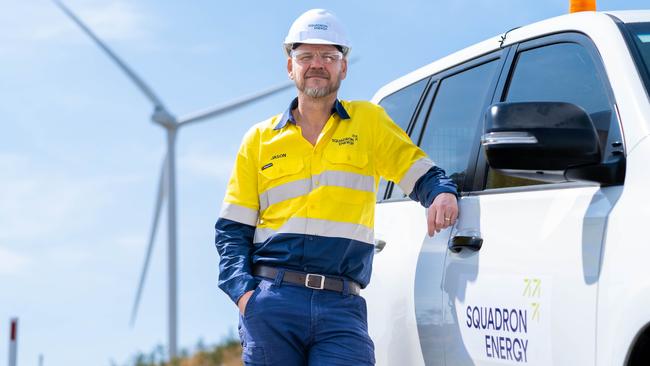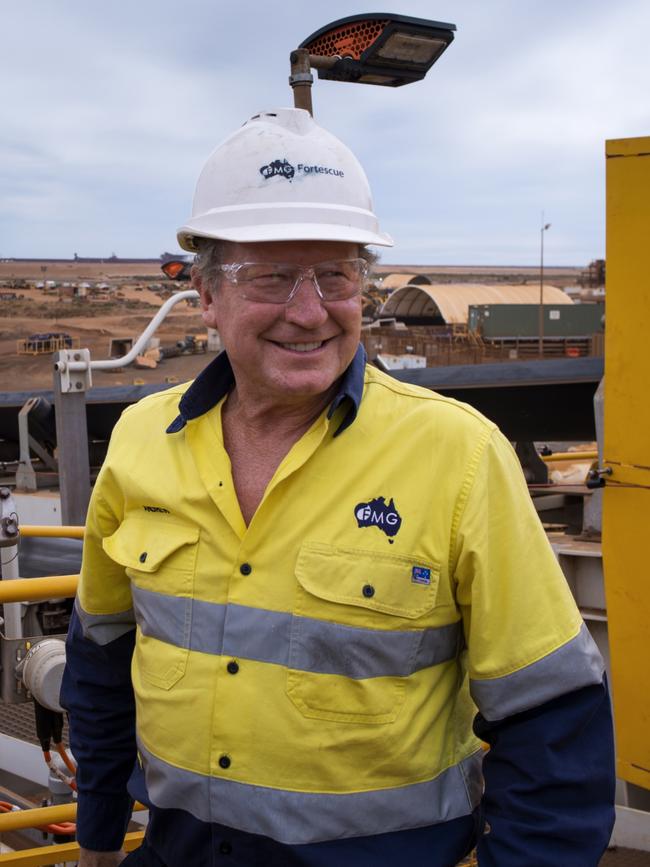Green power developer at odds with AEMO over the pace of renewable energy
Squadron Energy’s Jason Willoughby has rejected AEMO’s assertion too few renewable projects are being built.
Australia is on the cusp of a massive influx of renewable energy projects, the head of the country’s largest zero-emission developer says, clashing with warnings from the energy market operator that too few wind and solar projects have been constructed.
Australian Energy Market Operator chief executive Daniel Westerman on Tuesday said the country was not building renewable energy developments quickly enough to compensate for the loss of coal-fired power.
But Squadron Energy chief executive Jason Willoughby rejected that outlook, saying a “steep trajectory” of renewable assets would be built in the later half of the decade.
Australia has set an aggressive target of generating 80 per cent of its power through renewable sources by the end of the decade.

The target had increased pressure on existing coal-fired power stations, which already faced social, economic and reliability questions, but too many Australian developments remained on the sidelines, Mr Westerman said.
A failure to build quickly enough would increase pressure on wholesale prices and stoke concerns about energy security, he told the Australian Energy Week conference in Melbourne.
“There is a strong pipeline of potential future generation projects proposed for the National Electricity Market, totalling over 200 gigawatts.
“Half of these are wind projects, and there’s 40GW of proposed battery storage. But the crucial word here is ‘proposed’,” Mr Westerman said.
“Bringing these new projects to market and connecting them into the grid urgently is critical to ensure consumers continue to have reliable power when they need it.”
The warning came just weeks after data from the Clean Energy Council showed there had been no new financial commitments for large-scale renewable generation projects in the first quarter of 2023, which Mr Westerman described as “concerning”.
But Mr Willoughby, the head of Squadron Energy which is owned by iron ore billionaire Andrew Forrest, said years of work has gone into new renewable energy developments and these would soon materialise.
“It takes somewhere in the vicinity of five years to develop a renewable energy project,” Mr Willoughby said.
“We are at the tail end of that five-year period for a whole bunch of projects.

“What we are going to see is a relatively flat build-out of renewables and then I think we are going to see a really steep trajectory at the back of the decade, reflecting all that work.”
Should Mr Willoughby’s timetable prove correct, Australia would still meet its lofty renewable energy targets, which are widely seen as critical to achieving ing its emissions reduction aspirations.
But such a timetable would worry policymakers and the market.
Much of Australia’s largest coal generation capacity – the largest source of electricity for the country – is scheduled to be closed down well before 2030.
There is already growing concern about Australia’s generation capacity, as wholesale electricity prices remain relatively elevated.
Transmission remains one of the key obstacles to new renewable energy developments being built as the construction of high-voltage poles and wires is hindered by supply chain bottlenecks and community opposition.

Zero-emission developers have said they cannot proceed with developments until they have certainty that transmission lines will be built.
To break the impasse, states and territories have pledged tens of thousands of dollars to land owners who agree to host the transmission infrastructure, though opposition remains.
Squadron’s Mr Willoughby said Australia could improve several key facets of developing renewable energy projects, most notably the process for securing offtake agreements.
Offtake agreements are supply contracts struck by the owner of a generator such as an offshore wind facility to sell a certain percentage of the electricity generated.
These contracts allow a developer to secure funding to build the projects as they provide certainty about demand.
Mr Willoughby said these contracts often took more than a year to complete, slowing work on a new zero-emission project. Meanwhile, the speed of developing new renewable energy projects will be a key factor in determining whether Australia can bring down wholesale prices – the cost of generating electricity.

Australia is grappling with surging wholesale electricity prices, which have underpinned increases in household and business power bills of more than 20 per cent over the last two years.
The increases have left thousands of people struggling to pay their bills amid a cost of living squeeze driven by soaring inflation and interest rates at their highest in more than a decade.
Clare Savage, the head of the Australian Energy Regulator, on Tuesday said a growing number of households were struggling to pay their power bills. “The average debt of customers while in a hardship program has increased almost 8 per cent to $1871, and nearly 41 per cent of electricity hardship customers are not meeting their usage costs, indicating that many are becoming worse off while in a hardship program,” Ms Savage said.
Ms Savage told a conference the AER was making it a priority to ensure retailers offered greater help to struggling customers.
“Our focus will be on using our regulatory toolkit to ensure that all eligible customers are able to access the protections to which they are entitled, including ready access to hardship programs and payment plans that reflect their capacity to pay,” Ms Savage said.








To join the conversation, please log in. Don't have an account? Register
Join the conversation, you are commenting as Logout